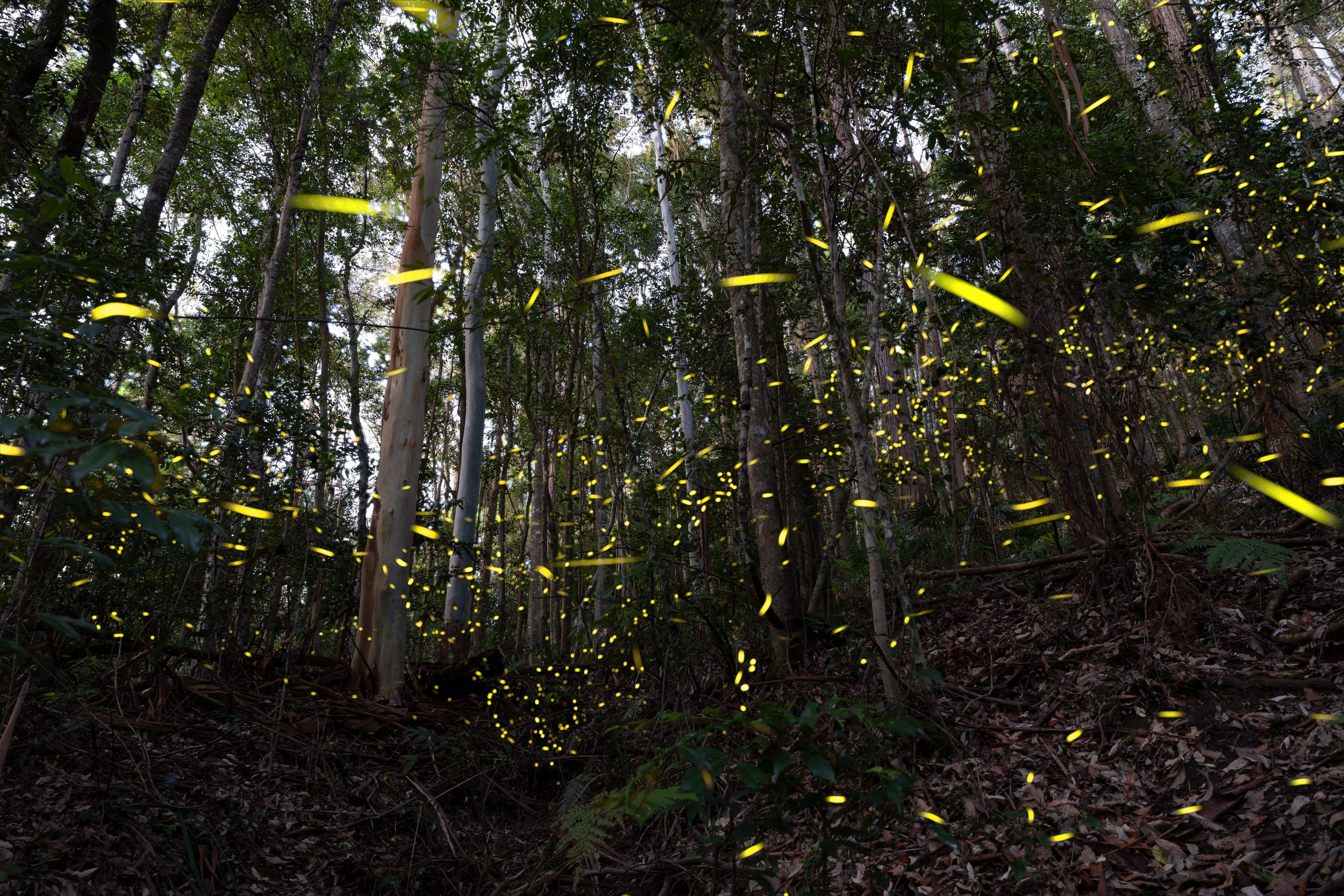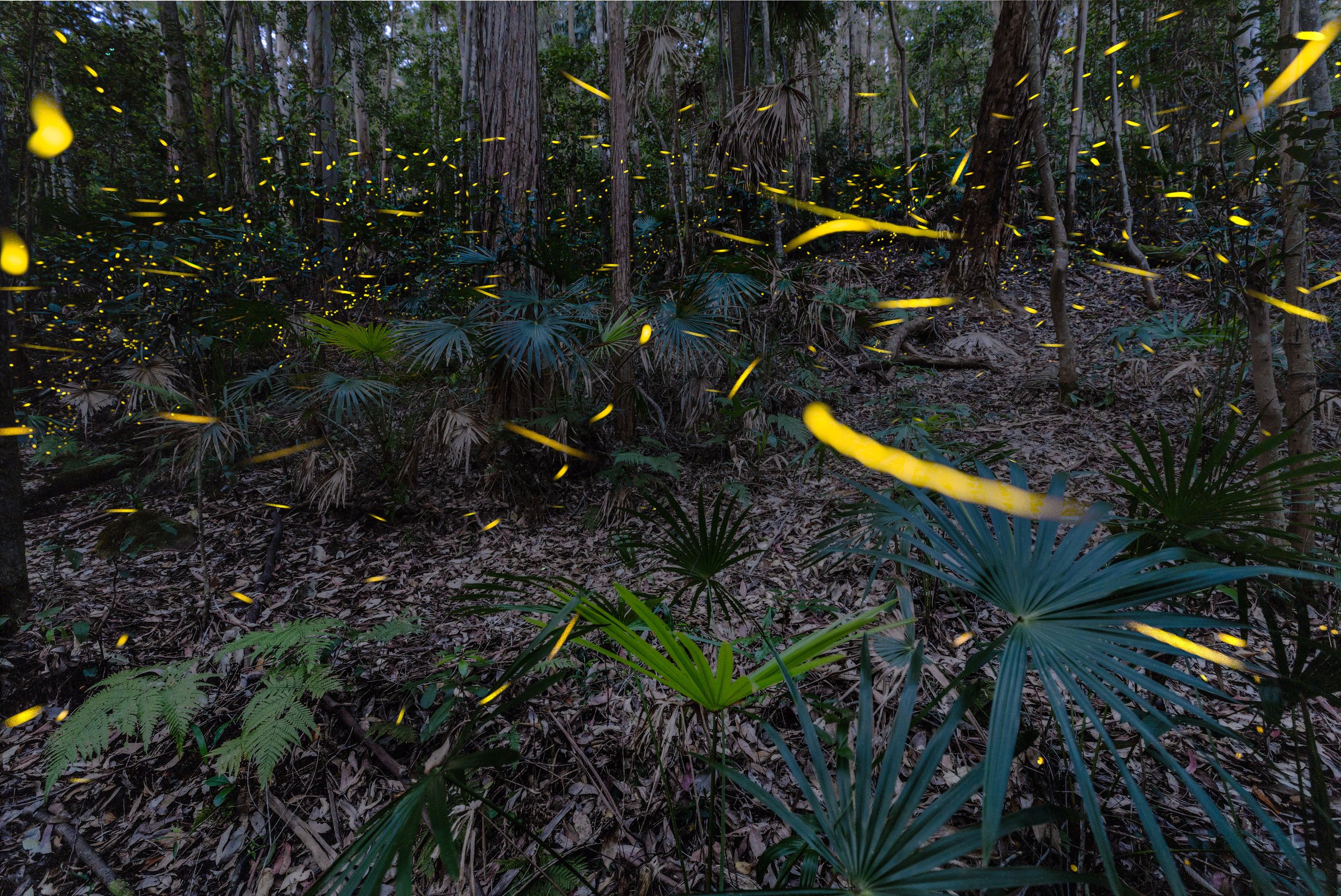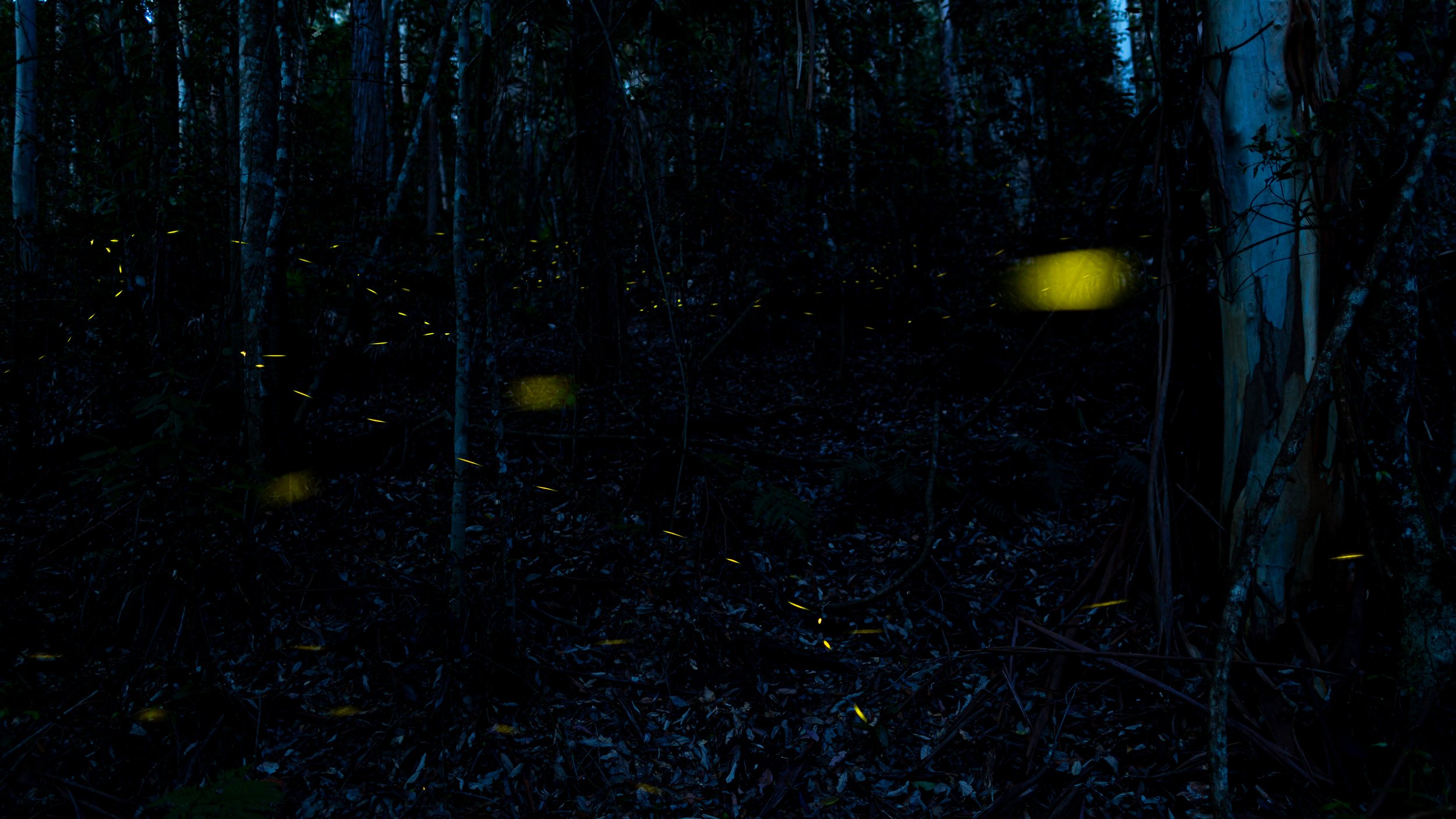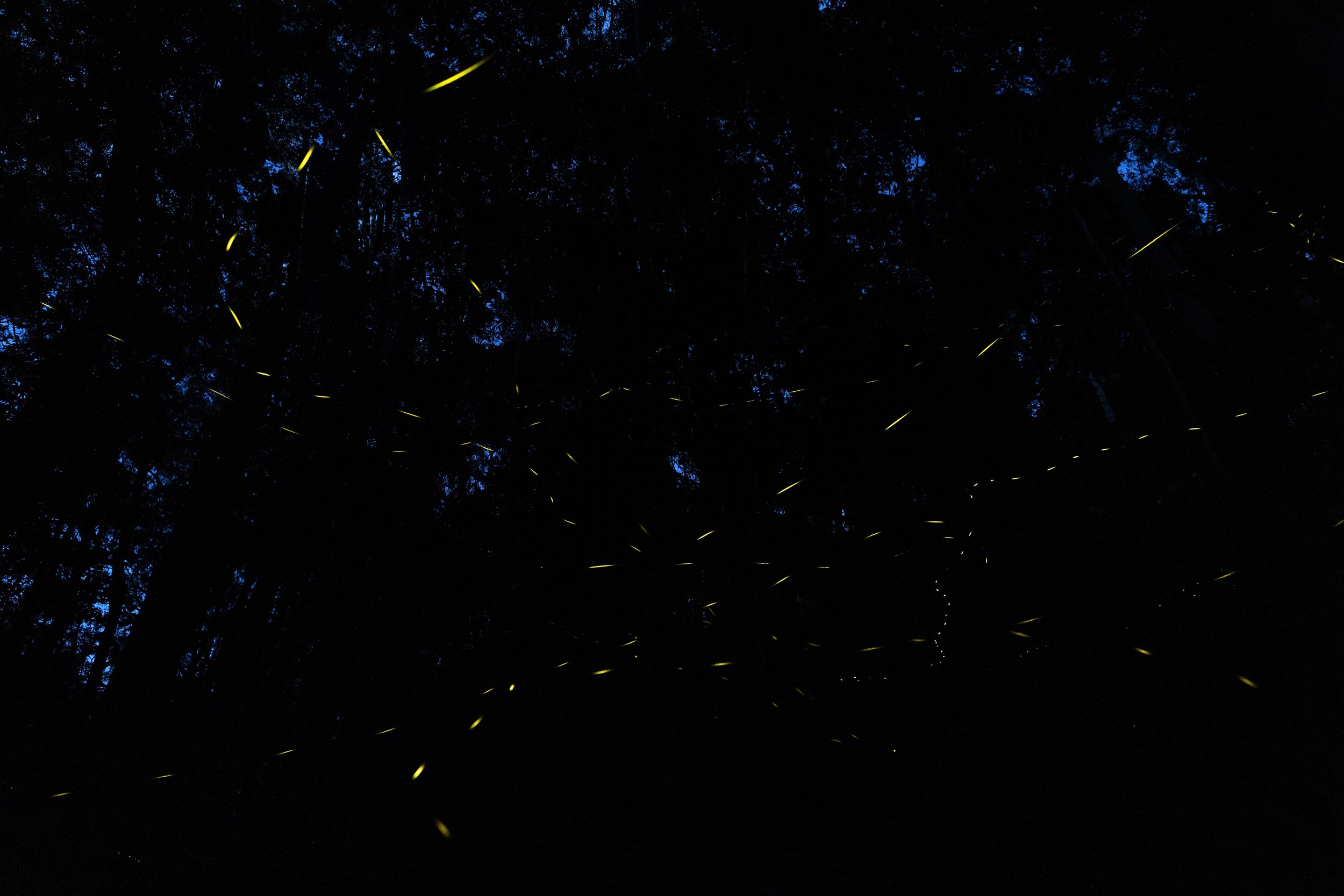Firefly photography tips
There are 25 species of firefly in Australia and with a little research you can discover when and where to find them. They are found in several parts of the Australia ranging from Kangaroo Valley NSW right up to QLD. These photos were taken in the Ourimbah State Park on the Central Coast NSW. What you are seeing are light trails from male beetles (females are ground dwellers) displaying their unique strobes and pulses of light in attempt to find their perfect match. You will notice that some trails are shorter than others and have slightly dotted trails rather than streaks. It is amazing just how bright these fireflies glow. Photographing them can be very rewarding and equally as frustrating. Here’s a few tips that might help…




Tips for taking firefly photos…
Find a known location that is close to a waterway. Humid and warm, windless nights are best, just on dusk
Arrive before sunset. Fireflies are only active for 45mins - 1hr on dusk. It’s a brief but amazing show that you won’t want to miss
Use a red torch and avoid trampling their habitat. They are sensitive to light and the females are on the ground.
Put your camera on a sturdy trip and use a cable release so that you avoid any camera shake. Set your your camera to burst mode so that you can lock your cable release and take consecutive images. (I’ll explain why in a moment)
Use a wide-angle lens to ensure more chance of capturing light trails and longer flight paths
I recommend the following settings. 30sec shutter speed, f/5.6 and vary your ISO (800-3200) as dusk turns to darkness
Focus on some interesting forest detail then switch off automatic focus. Make sure you don’t bump the lens or move the camera otherwise you’ll need to refocus.
Take a bright image of the scene while there’s still light if you would like to create a detailed forest photo later.
Once you start seeing the fireflies trailing through the landscape, lock down the shutter release cable and enjoy the magic.
After an hour you will notice a decline in luminous activity which means the show is over for the evening. If you have time, plan a few visits and get to know how they behave. Your photos will get better each time.
Post Production:
Any software that can be used for creating star trail photos will be good for firefly composite images. My preference is Adobe Photoshop. Choose your best images (the ones with the most prominent trails) and open them as stacked layers
Click on the top layer, hold down the shift key and scroll down to the bottom layer. This will select all layers.
Choose the “Lighten” Blend Mode from the layers dropdown menu and watch your light trails come alive in the same image.
I understand that this explanation is suited to intermediate and advanced camera users. If you would like join a tutorial in photographing light trails then please get in touch using the form below